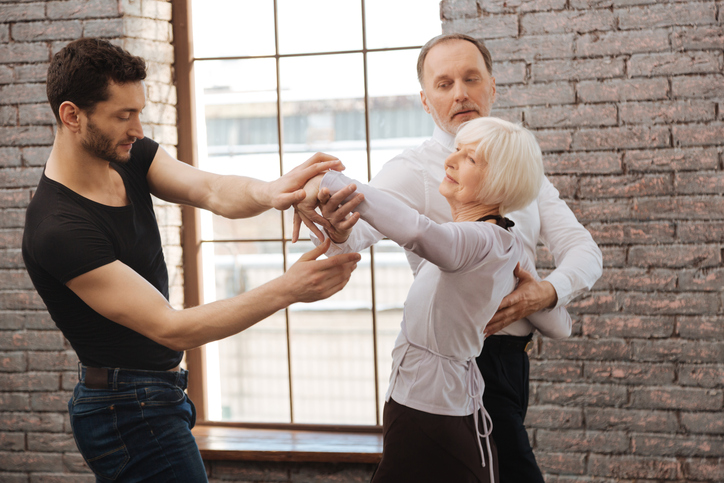Doctors always tell their patients it is important to exercise. Exercise not only helps keep us in shape, but has tremendous benefits on the brain. When it comes to dancing, it is no different. Dancing is an expressive art form, but also reaps many health benefits. Introducing the benefits of dance therapy in your studio can be a great way to open up to new clients. Although, you will need to currently hold a Master’s degree if you want to become certified. Alternatively, you can hire a dance therapist.
What is dance therapy?
According to the American Dance Therapy Association (ADTA), dance/movement therapy is defined as the “psychotherapeutic use of movement to promote emotional, social, cognitive, and physical integration of the individual.” Dance therapy is fantastic because of how versatile it is. Dance is for people of all ages, races, backgrounds, and disabilities. Additionally, dance is an exercise you can do individually, in couples or in a group. More importantly, mental health, rehabilitation, medical, and educational settings also utilize dance therapy.
How does dance therapy work?
Patients who see a regular dance/movement therapist have the right to confidentiality. Dance therapists open a space for patients to feel safe, comfortable, and to express themselves. According to GoodTherapy.org, dance therapy becomes more about the conscious and unconscious language between you and a therapist. This unconscious language or “movement vocabulary” allows therapists to respond accordingly to your mood. Furthermore, dance therapists read body language and other non-verbal cues to assess treatment.
An example of how therapists read body language to assess is: Utilize “mirroring,” where you mirror each other’s moves, to explain empathy, and then to validate those feelings.
Marketing the benefits of dance therapy
GoodTherapy.org states,
“dance therapy was founded on the idea that motion and emotion are interconnected.”
Therefore, dancing can help with many aspects like psychological, cognitive, social, and physical issues. Additionally, dance therapists create strong relationships with their patients, which can also lead to emotional support. People who are interested in trying a new form of therapy can be assured that dance brings along many benefits.
Educating people about these various health benefits is how you can acquire new clients. Many people seek out non-traditional and/or holistic therapy options because they want to self-treat. Dance therapy may be the solution for some who are looking for a natural approach. Here are three health benefits you can market to the public to attract new clients.
1. Promotes brain health
Brain health has proven to improve with dance exercises. In a 2008 study taken from a Harvard Medical Journal article, a neuroscientist from Columbia University came to the conclusion that “synchronizing music and dance constitutes a ‘pleasure double play.’ Music stimulates the brain’s reward center, while dance activates its sensory and motor circuits.” Dance stimulates your brain with physical movement and social interaction. These things combined can help treat psychological and cognitive issues like dementia, PTSD, and anxiety.
2. Reduces depression
Dance is a fantastic way to get your mind off of your daily routine and bring joy into your life. Using dance therapy to fight depression is a quick way to jump start the endorphin and dopamine in your brain. Someone with depression will feel unmotivated, but dance can help distract those thoughts for a bit. According to Jen Reviews’ Benefits of Dancing, the activity also helps with depression due to the social benefits of dance. Being around other people, getting out of the house, and interacting with others can help reduce depression. Furthermore, maintaining a client’s set schedule can force them into the groove of going every week and help them feel better.
3. Improves physical health issues
Dance is such an active exercise and it has been found to be therapeutic for those with motor-system disorders, like Parkinson’s disease. Dopamine cells help the brain with movement and coordination. Parkinson’s disease kills those cells and reduces the amount of dopamine cells in the brain. Furthermore, some of the side effects can include tremors, stiff muscles and limbs, and loss of balance. Dance can help alleviate these symptoms and bring comfort to a client’s life. Furthermore, people with arthritis, chronic pain, obesity, and hypertension can benefit from dancing for similar reasons. More importantly, dancing can help older people stay active and make use of their muscles.
Whether your client is dancing for mental health or physical healing, dance therapy activities have proven to help either way. New friends, pain alleviation, and reduced stress are just some of the benefits of dance therapy your clients will reap. If you are interested in helping others, becoming a certified dance therapy instructor may be the next step for you.

